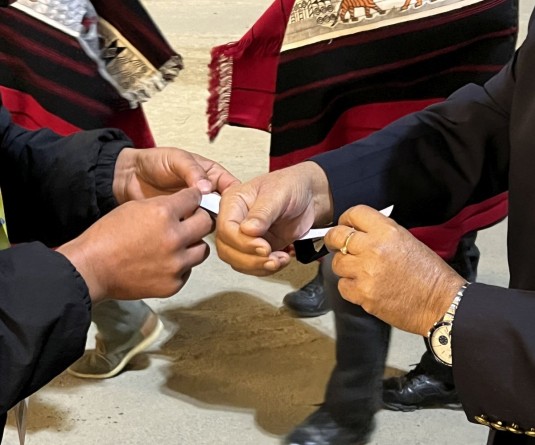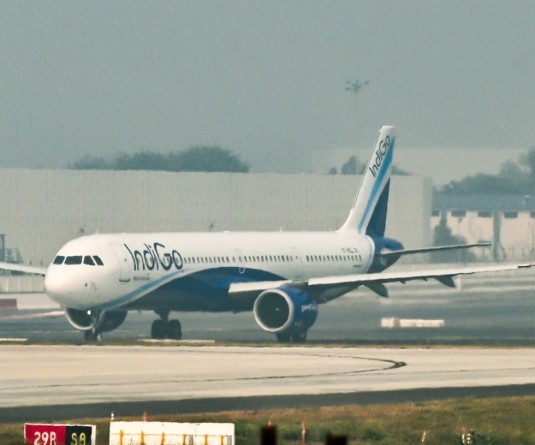Officials and participants during the workshop on ‘Building a Child-Friendly Media’ organised by Nagaland State Commission for Protection of Child Rights in collaboration with Dimapur Press Club on November 15.

Journalists urged to re-examine newsroom priorities in child reporting
Morung Express News
Dimapur | November 15
Media professionals today were called to practice “maturity, empathy, and constitutional responsibility” in reporting stories involving children, with a strong caution that careless coverage can cause “irreversible harm.”
The urgency came during the one-day workshop on ‘Building a Child-Friendly Media,’ which was organised by the Nagaland State Commission for Protection of Child Rights (NSCPCR) in collaboration with Dimapur Press Club in Hotel Saramati.
Special Public Prosecutor Imlimongla, Fast Track Special Court (FTSC), Dimapur, the resource person, stressed that “words heal and words wound.” She reminded journalists that the Indian Constitution protects children’s dignity through Articles 14, 15(3), 21, and 39(f), and that press freedom under Article 19(1)(a) carries reasonable restrictions when it comes to protecting minors.
The child-rights expert outlined key legal obligations under the Protection of Children from Sexual Offences (POCSO) Act, including the mandatory reporting of sexual offences (Sections 19–21) and the strict ban on publishing a child’s identity in any form (Section 23). Similar prohibitions were highlighted under the Juvenile Justice (Care and Protection of Children) Act (JJ Act), Section 74, which bars revealing any identifying details of children, whether victims, witnesses, or accused.
Cautioning against sensationalism, she cited guidelines from the National Commission for Protection of Child Rights (NCPCR) and the National Human Rights Commission (NHRC), which urge the media to uphold a child’s best interests, avoid disturbing imagery, and seek expert input.
Imlimongla also pointed to newer provisions under the Bharatiya Nyaya Sanhita (BNS), noting that false, misleading, or defamatory reporting, especially when involving children could attract penal action under Sections 353, 356, and 196. In the digital era, she reminded media professionals that harmful content spreads instantly and cannot truly be erased.
“Caution is not censorship — it is conscience,” the speaker said. Calling children “lives, not headlines,” Imlimongla stressed that responsible reporting strengthens both justice and democracy. “When the media chooses restraint over sensationalism, it becomes a force for healing, not harm.”
She urged newsrooms to adopt clear child-protection protocols, verify information, seek legal review, provide periodic training, and display child-helpline details during child-related coverage.
‘Child best protected by silence, not exposure’
Associate Editor of The Morung Express, Dr Moalemba Jamir also called on journalists to re-examine their priorities when reporting on children. “Sometimes silence protects, and the media more than anything else must know that silence serves a greater good for child dignity, privacy and future,” he stated.
Dr Jamir highlighted that the rise of digital platforms has blurred the lines of responsibility, turning ”everyone into a potential publisher” and intensifying the pressure for sensational content. This, he argued, raises a critical question: ”Are media priorities aligned with child rights, or with sensationalism and content creation?”
He stressed that safeguarding a child's identity, whether the child is a victim, an accused, or a witness—is paramount, especially as more cases surface due to increased reporting and awareness. While recent national crime data placed Nagaland among the safest for women and children, the rise in sexual offence cases underscores the need for stronger protections. In close-knit societies, he addressed, ”even minor lapses could create long-term serious consequences.”
Calling identity protection ”not just compliance but a larger responsibility,” Dr Jamir said the media must avoid fuelling vigilantism or community backlash. ”A child involved in a case today shouldn’t carry the scars into adulthood. It shouldn’t follow them into the future,” he said, adding that ”the child is best protected by silence, not exposure.”
Ultimately, the goal of the media is to minimise harm and create a safe environment. ”A child-friendly media must be a stabilising force, not an amplifier of emotion.” To achieve this, he outlined three key responsibilities: ”knowing when to withhold,” placing protection above virality, and treating a child's identity as ”sacred, not just a mere content.”
NSCPCR's renewed focus
Delivering the keynote address, retired NCS and Chairman of the Nagaland State Commission for Protection of Child Rights (NSCPCR), Alun Hangsing, underscored the crucial role of all stakeholders in strengthening child-rights awareness.
He informed the gathering that the Commission, instituted in 2013, has spent the past decade addressing structural gaps. With a new team taking charge in 2023, Hangsing said the NSCPCR has renewed its focus on disseminating child-rights information to the grassroots and mobilising all agencies involved in child welfare. As an autonomous statutory body, the Commission is mandated to monitor government departments, programmes, and policies related to child rights.
Hangsing noted that the workshop aims to support this mission by equipping media professionals with the knowledge and tools needed to strengthen child-rights protection across the state.
In a positive outcome, the NSCPCR Chairman gave a nod to conduct intensive training for media professionals, village councils, and civil societies in the near future, involving all relevant stakeholders.




.jpg)

